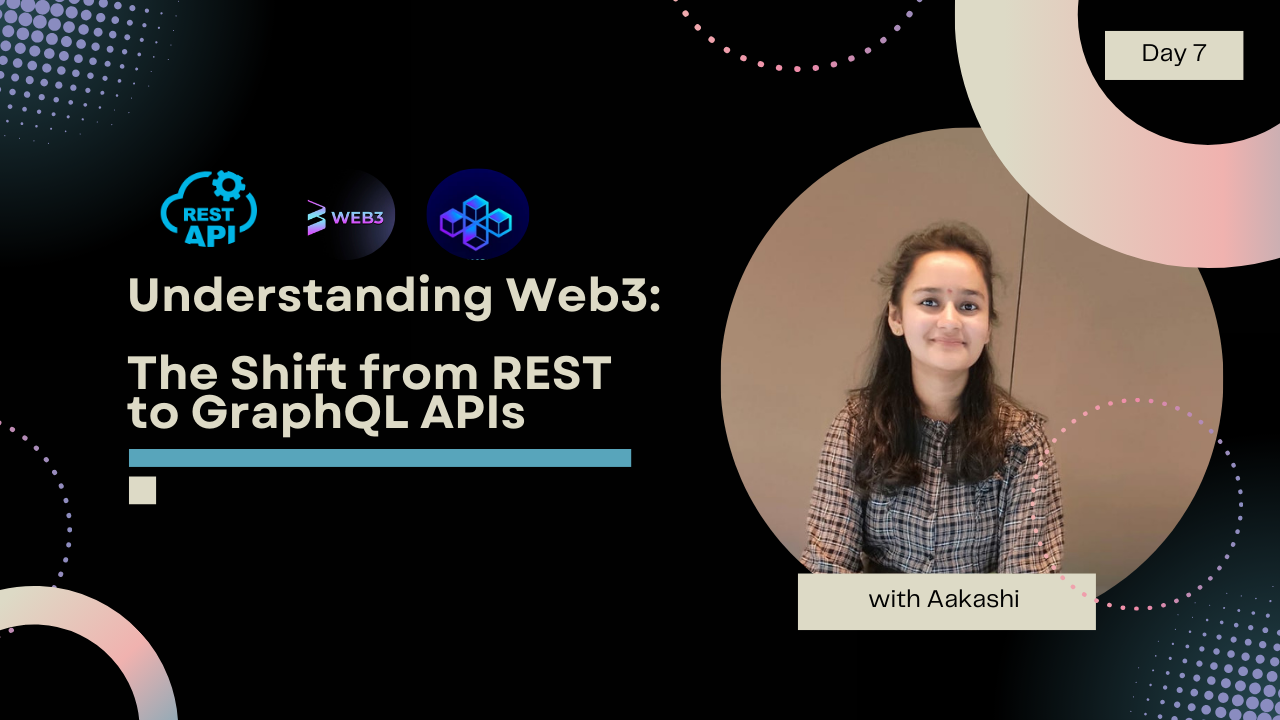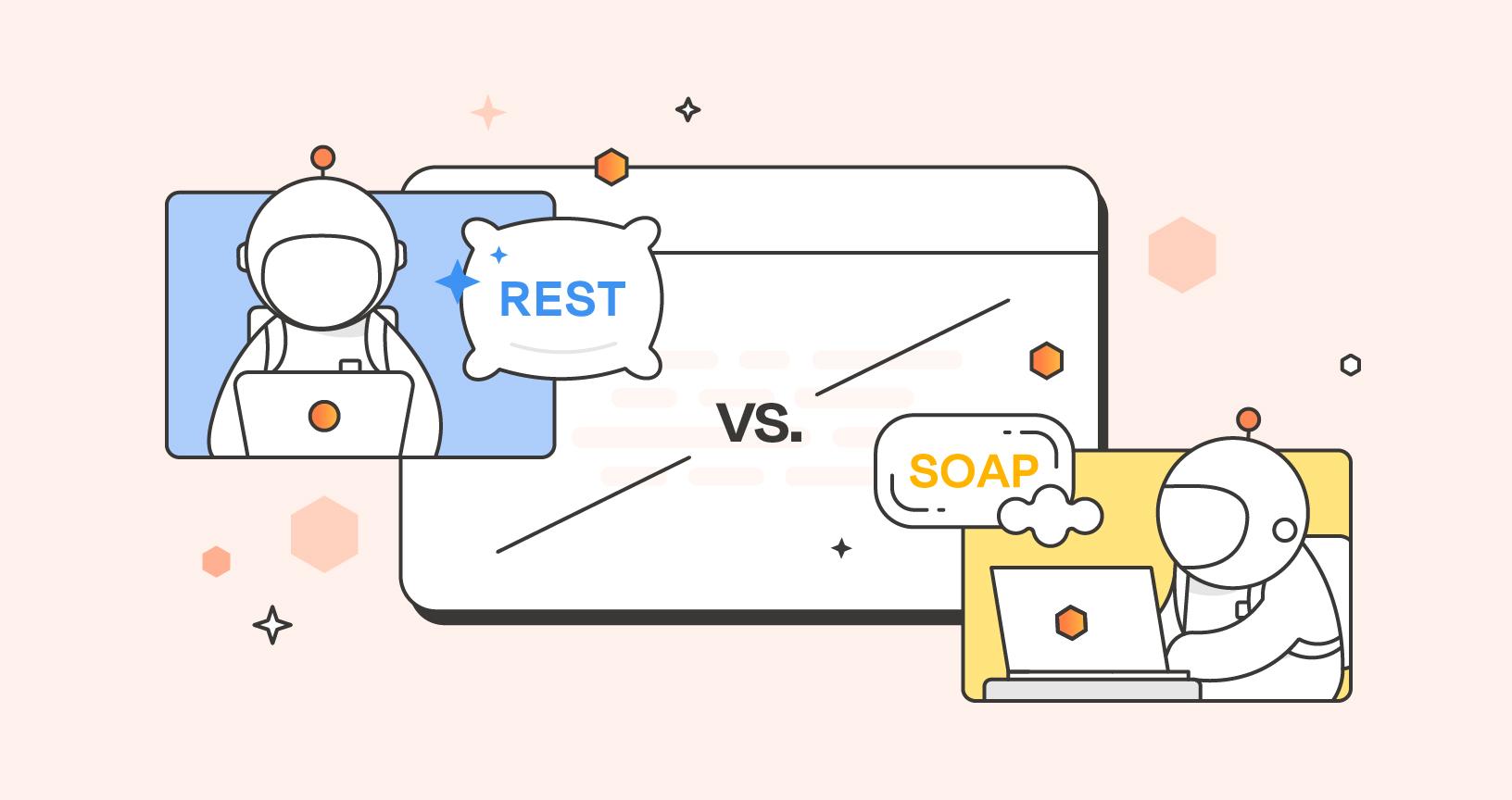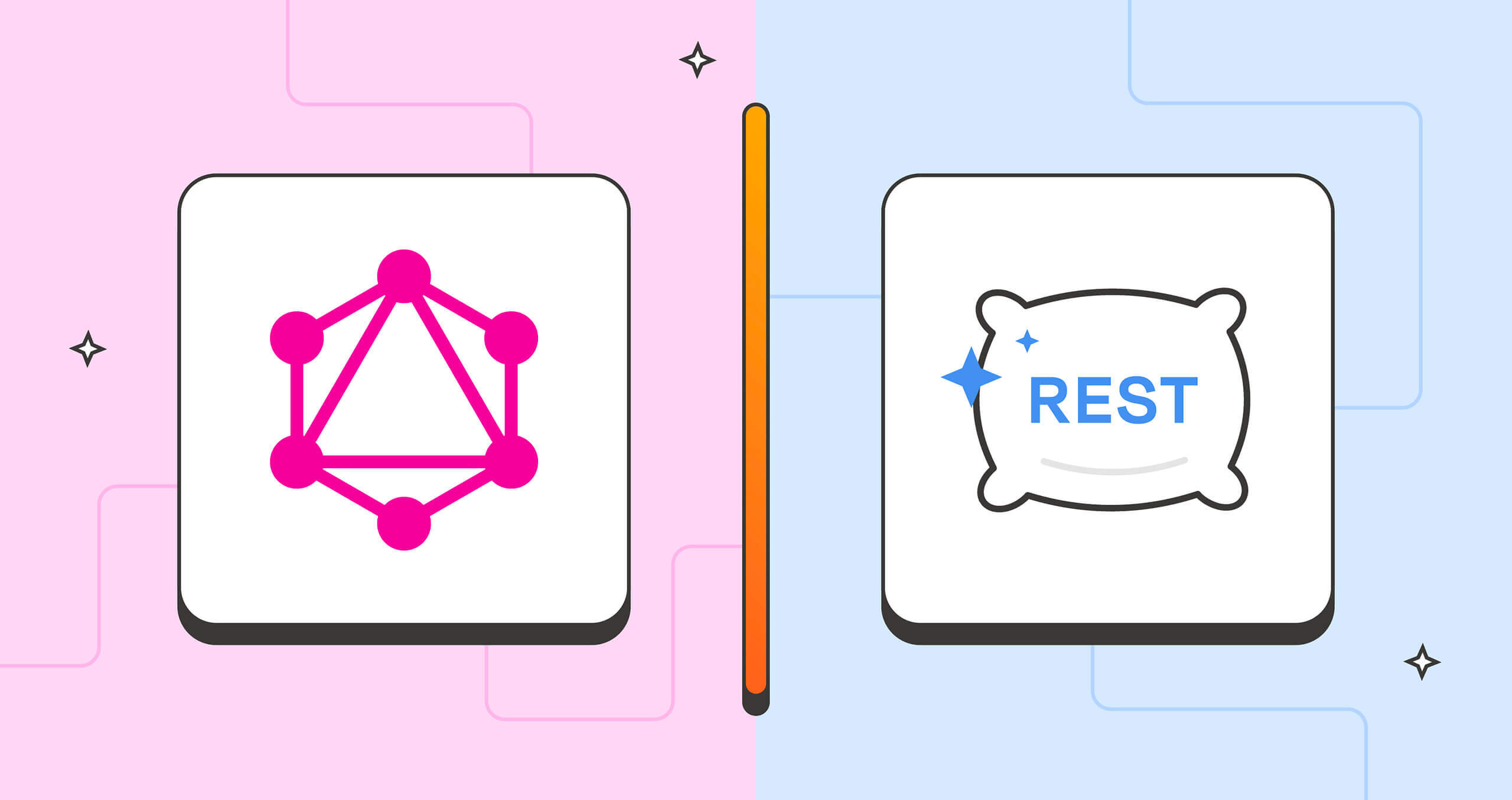Understanding Web3: The Shift from REST to GraphQL APIs
 Aakashi Jaiswal
Aakashi Jaiswal
I woke up at 7:25 a.m. Made a tweet of “Rise and shine”. I listened a podcast of Nikhil Kamath with the man behind Aadhar card, UPI, “Nandan Nilekani”.
Here are the highlights of the podcast:
India's digital transformation is reshaping daily life significantly.
He highlighted the importance of the India Stack initiative.
Young entrepreneurs face a 'tyranny of choice' today.
Energy transition presents vast investment opportunities for the future.
Nilekani emphasizes building on India's digital public infrastructure.
Today I studied more about the APIs their differences and web3.0 and it’s necessities.
Let’s first talk about how REST API is simpler than SOAP

-REST API is lightweight, flexible and transparent and easy to use as well.
-SOAP API requires more code to complete.
-REST API supports messaging in different files formats like XML, JSON, HTML, YAML.
-SOAP API is considered more secure protocol, better suited for data integrity requirements.
Each has their own advantages, selection might depend on the use case.
Which is better, REST or GraphQL?

-Both of them are stateless and use client/server model and use HTTP.
-REST is generally easier to implement.
-GraphQL offers more flexible and efficient data fetching, which can improve the performance of the system.
-REST is generally preferred for public e-commerce sites like Shopify, GitHub.
None of them are superior, both have different tools useful for different tasks.
REST and GraphQL are both API design approaches, with REST being an architectural style and GraphQL a query language. While REST typically requires multiple endpoints and can lead to over-fetching data, GraphQL allows clients to specify exactly what data they need through a single endpoint.
In the context of Web 3.0, which emphasizes decentralized applications and user control over data, GraphQL's flexibility aligns well with these principles, enabling efficient data handling in a more user-centric web environment.
What is web3?

web3 is the evolution of World Wide Web, it is the next phase of internet. It decentralizes data ownership and their control on the internet. Most of the applications run on the centralised entities that determine how they save and use the data of user.
Instead of being controlled by centralised entities' management structure, web3 allows where the end user can control data, determine pricing and can directly contribute to the development. It has a mechanism which regulates how the user interact with each other. In web3, there is no use of centralised entities.
Main idea behind web3
-Decentralization
It’s the key feature of web application of web3. It aims to distribute and store data in decentralized networks. Decentralized internet users can sell their data if they want too.
-Trustlessness
In web3, user can rely on any specific party without trusting them.
-Semantic web
It can easily perform the complex task by understanding the content and context of data. It uses metadata and AI to provide meanings to user-generated data.
Web3 aims to move towards semantic web technologies. Like search engine will provide more accurate and contextually relevant search results and intelligent agents assist users in performing tasks more efficiently.
-Interoperability
It aims to create more interconnections between diverse technologies, so that the data can be easily flown between different platforms without intermediaries. It makes data portable, so users can switch easily between the services.
Why is web3 important?

This is how the journey of web has started.
When the internet just started, read-only web experience were common. Users can only read the content that was published by the companies who purchased the infrastructure hosted static webpages.
Blogs and social media platforms, applications, have become more interactive in web2. Here we can generate, publish and exchange information with each other. But in web2 users have limited control over the data and how it is used and managed.
But in web3 users have complete control over their data and it also gives a better user interactions. Web3 will promote more transparency, security and trust through the technologies like blockchain and Artificial Intelligence. The image is also giving the idea about the structure of web3.
It’s been seven days, I am writing & publishing the blog every day and am enjoying it!!
Subscribe to my newsletter
Read articles from Aakashi Jaiswal directly inside your inbox. Subscribe to the newsletter, and don't miss out.
Written by

Aakashi Jaiswal
Aakashi Jaiswal
Coder | Winter of Blockchain 2024❄️ | Web-Developer | App-Developer | UI/UX | DSA | GSSoc 2024| Freelancer | Building a Startup | Helping People learn Technology | Dancer | MERN stack developer